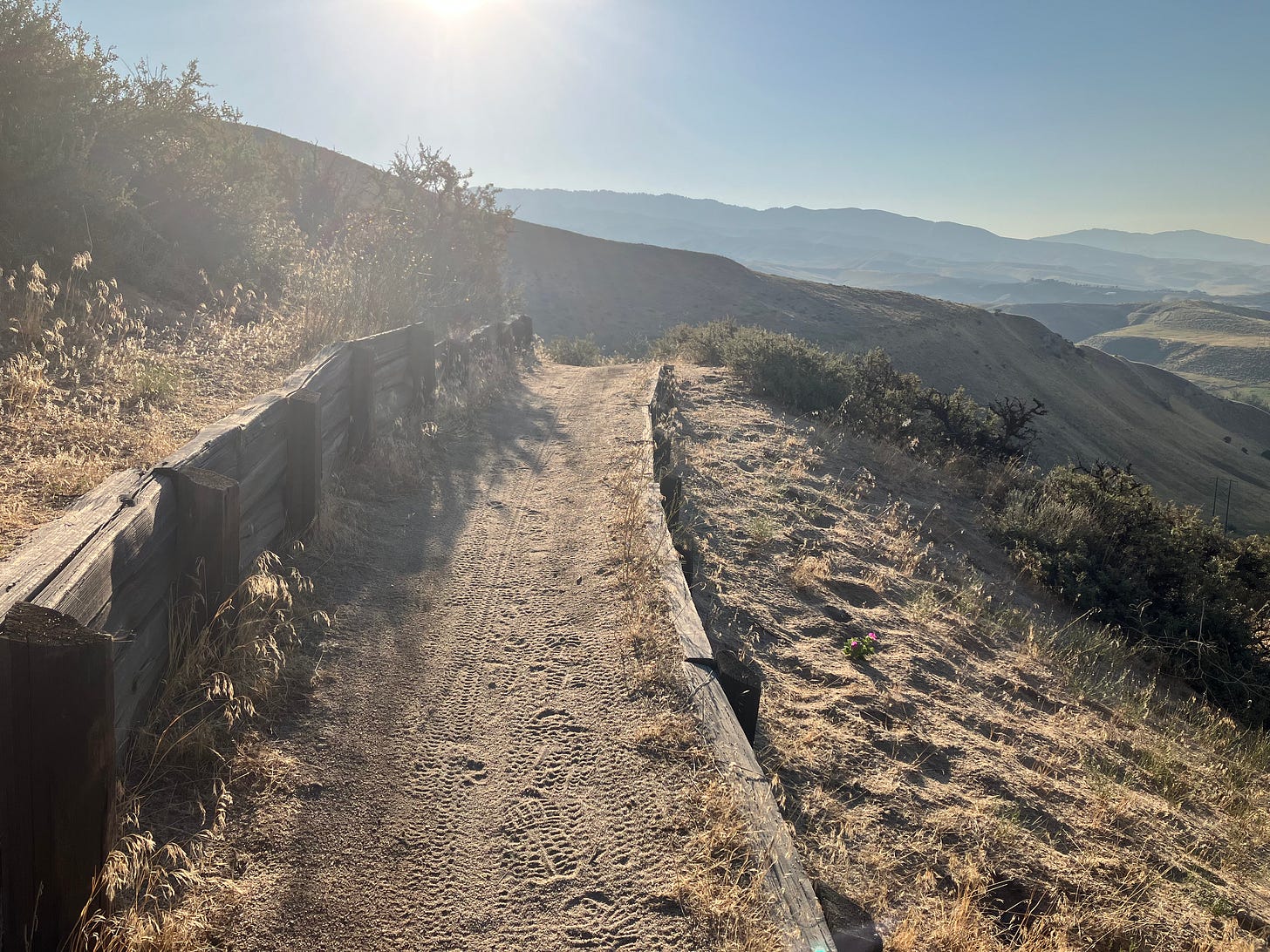I ran Polecat Loop this morning. There were no polecat sightings. Or even cat sightings. I did have poles with me. However, I didn’t use them.
There are no hard and fast rules about when to use poles or not, but I didn’t feel I needed them on this morning’s outing. I knew that going in, as I’d run Polecat before—but I took them anyway. Here’s why:
The mountain race I’m training for this September is one where poles will be very beneficial. I’m learning to use them now in my training, and have spent a few months using them even when not really necessary, just to get more proficient with them. Now that I’ve gotten the hang of them, I’m not *using* them every time I hit the trail, but I am *carrying* them. When I run IMTUF this September I’ll plan to have them on me the whole 100 miles.
So learning to use them is just one part of the equation. Figuring out how to store and carry them when not in use is another.
Some trail runners use quivers that attach to the back of their running vests. I haven’t tried this method, but I don’t have the world’s best shoulder mobility, so I can’t imagine this being an ideal solution for me. As mentioned in the article I linked to above, some runners are annoyed by the clicking sounds of the poles in the quiver. So I didn’t really even consider this an option for me. Too fiddly when on the move.
Some running vests come with multiple ways to attach poles. I’m already invested in the Nathan vest that I use, and it doesn’t have external bungees for attaching poles to the exterior of the vest, like a lot of other popular running vests. I won’t provide links for the many, many pole attaching systems out there, but here are a few quick drawings to satisfy your curiosity.
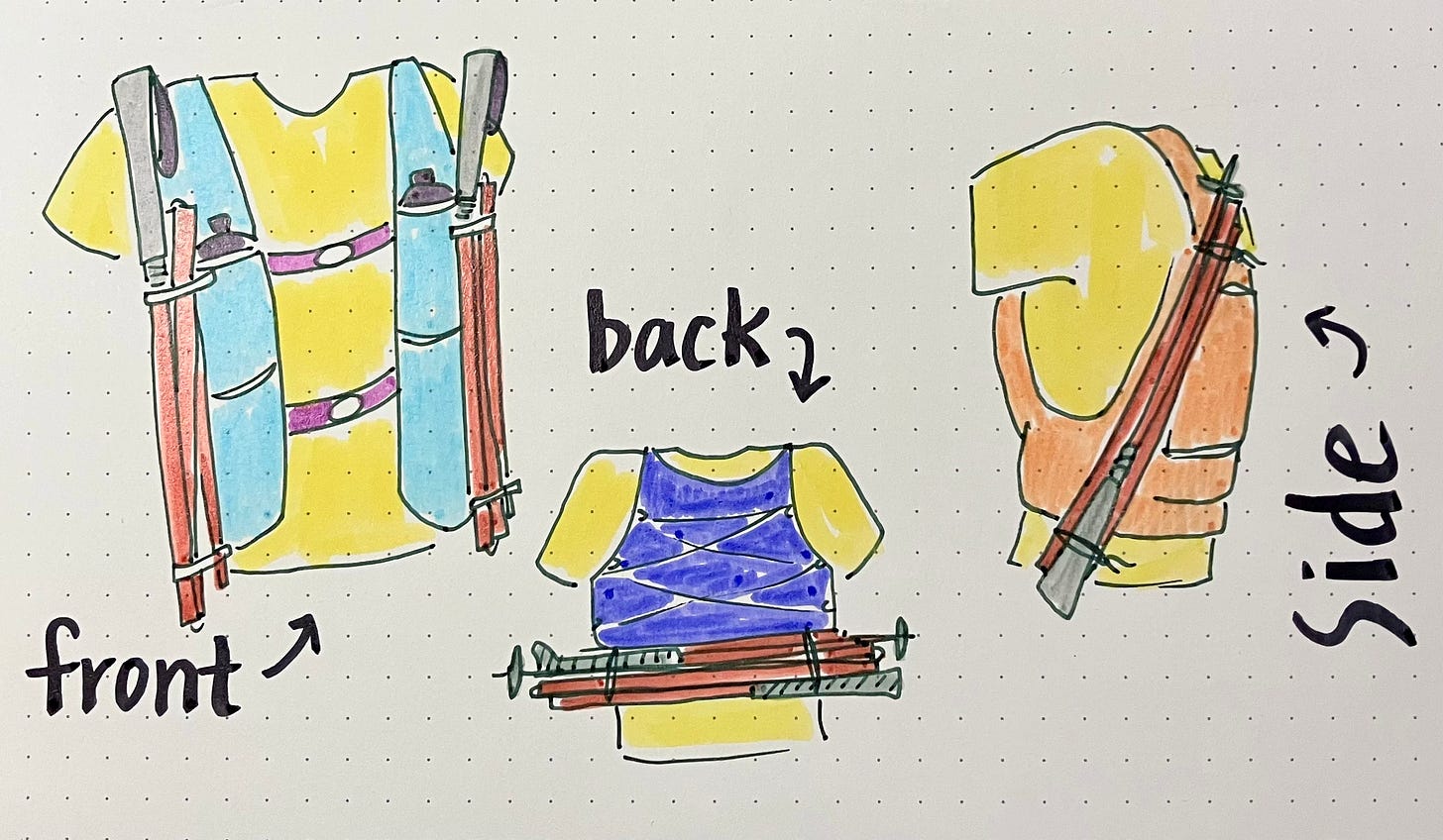
I could have modified my vest with straps or elastics to attach my poles to the outside, but decided against it for a couple reasons:
I don’t want to compromise access to the pockets that I’m accustomed to.
I have a short torso, so I’m not sure that carrying poles on my upper body (at least lengthwise) is a good idea for me.
So what I looked for was a no-bounce solution for attaching the poles to my waist, just above my booty. This Salomon belt is what I ended up with. It’s called the Pulse, and is one continuous piece that you step into.
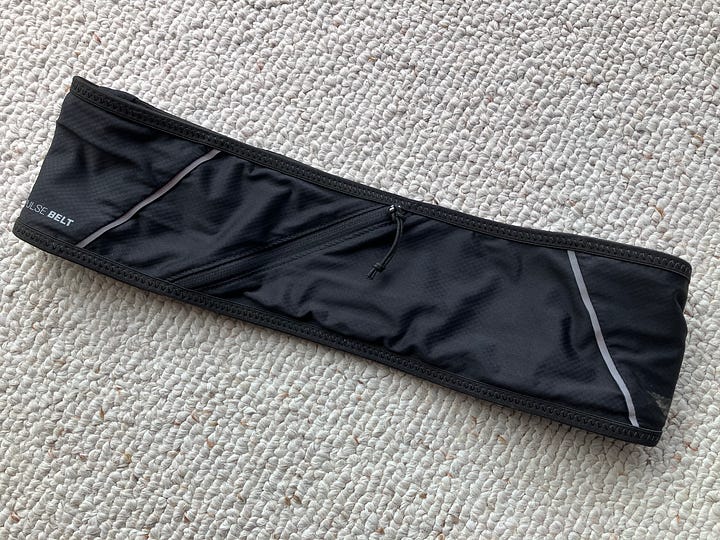
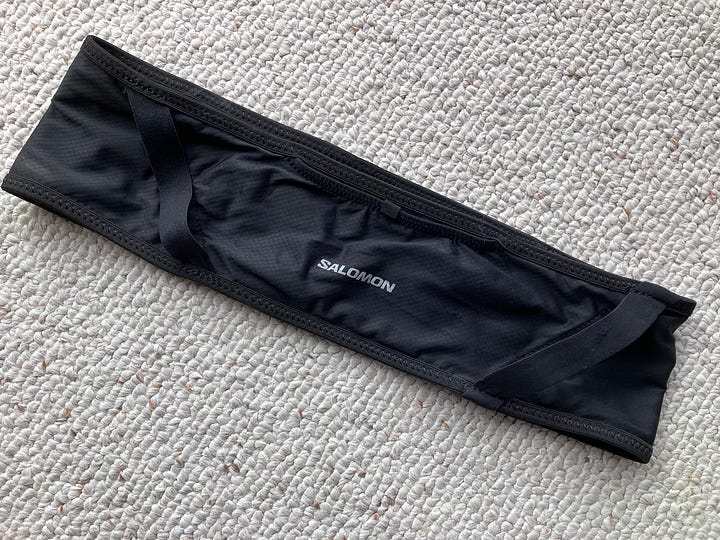
This belt keeps my poles totally separated from my vest, ensuring I get full usage from my vest for hydration, fuel, and other gear.
I also like the way this positioning works. To me it feels more balanced to distribute a substantial piece of gear to my waist, and I like that it keeps my poles safely away from my arms while running.
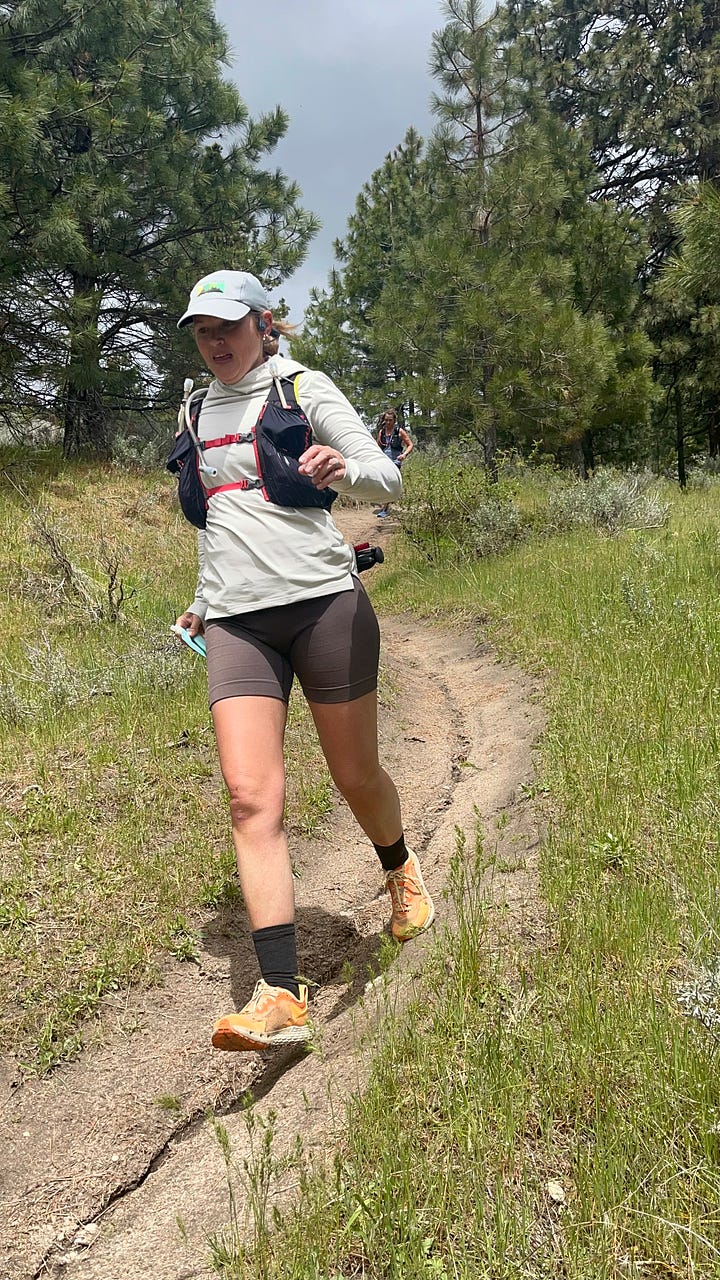
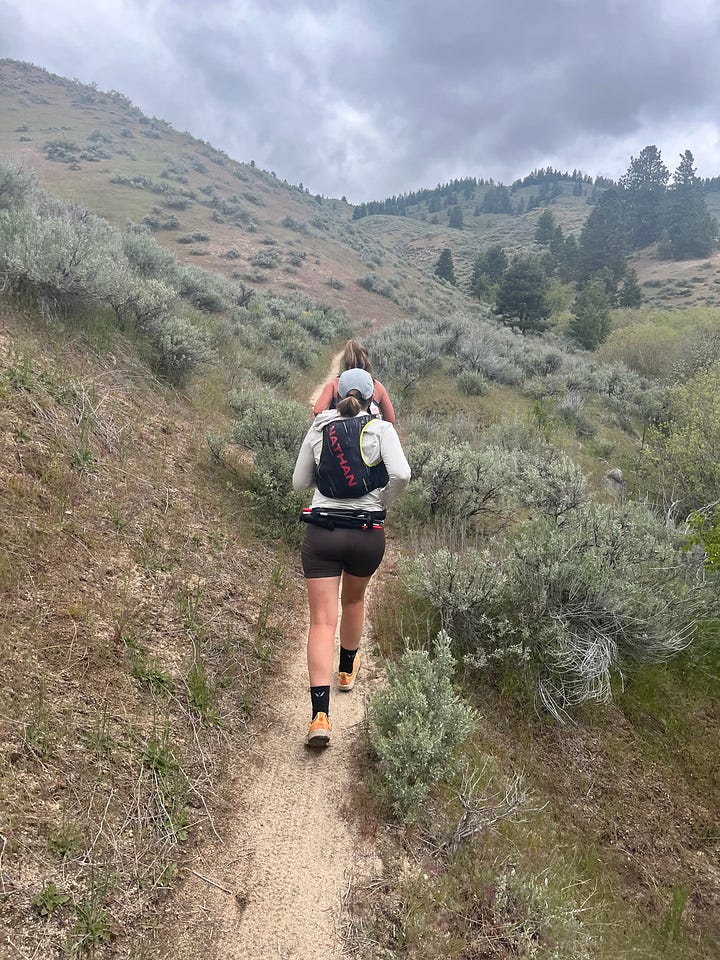
This particular belt also provides easy access, requiring very little in terms of mobility: just slide the belt around, stow the poles into the elastics on your waist, then twist it back around to your backside once they’re secure. I’ve done this maneuver many times now, and I’ve had no trouble turning it around with or without poles attached. Obviously every body is different, and possibly the shorts that I wear allow for easy rotation, so you’d want to confirm this is true for yourself and your own running getup as well. It seems that correct sizing would also be critical. (I bought a large, after consulting Salomon’s sizing chart and measuring the area around which I wanted my poles to rest.)
And bonus, the front of the belt has a zippered pocket for additional storage. I’ve started carrying my phone here instead of in the chest pockets on my vest. I like the way it feels on my waist better, and is *slightly* easier to access. When stored in my vest, my phone was sandwiched under my front flasks, next to my chest, which makes for more finagling when my vest is fully loaded.
I’ve been using the Pulse belt for over a month now, and I’m loving it. Prior to this I was just hand-carrying my poles when not actively using them.
Speaking of not actively using them, the key to carrying them this morning, and on *all* of my trail excursions is to ensure that I have logged lots of miles and many reps with my poles stored on my backside *before* I get to the IMTUF start line. Sure, I’m finding it convenient and comfy for five, eight, or sixteen mile runs, but what about when I’m wearing poles for up to 36 hours?
The strategy is to make sure my skin is as conditioned to this carrying method as it can be! If I’m able to complete this 100 mile mountain race this fall, I’ll certainly write about it if my pole carrying solution back-fires . . .
Speaking of the 36 hour cut off for IMTUF, I’ve done a little number crunching since registering, and I’m officially very nervous. I still have more training time, but the truth is that 36 hours for this particular course will be very challenging for me given the terrain and my current mountain paces. I’ve never entered a race knowing from the start that I’ll be chasing cut-offs, so this is an interesting mindset to embrace!
Though I’d obviously love to finish any race I start, I do know from my previous DNF, that not finishing an event can be as valuable an experience as finishing one. So staying positive and open minded about my race is probably more important that my projected pace at this moment in time. If it *does* come to a DNF, any miles that I complete under the cut offs in this race will yield valuable data that helps me to train for the next one. Sometimes it takes a few attempts to accomplish our goals, and that is okay.
So, we’ll see. Maybe I’ll finish this year. Maybe I won’t.
Either way, I’ll have a lot to reflect on, so I’ll likely be writing here this fall all about that process.
Including my poles experience, I’m sure.


